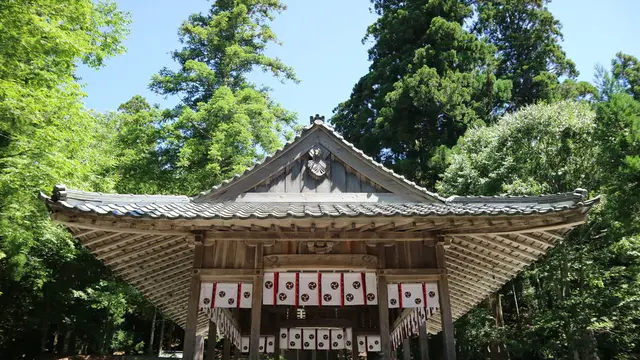
Shrines and temples with millennium of history
京都Shrines and temples with millennium of history
Explore hidden spots in Miyama! Let us introduce shrines and temples with long history that are not touristic spots.
-
The shrine on the east side of kayabuki-no-sato, Thatched Village. Designated as the Kyoto prefectural heritage site. One of the biggest shrines in Miyama.
-

Stone pillar showing "Chii Hachiman Shrine"
Find an old stone pillar while strolling around kayabuki no sato, Thatched Village. Let's visit the shrine!!
-

Walking up stone stairs
The stairs close to the stone pillar is the way for the shrine. Feels like going up to sky!
-

Red banner showing "Hachiman Shrine"
On the top of stairs, a red banner showing "Hachiman Shrine" come out. You may probably have seen it while strolling around the village.
-

Torii gate
As locals, why don't you bow before the torii gate to greet gods and walk into the shrine precinct.
-

Sacred dance hall (maiden)
The place where sacred shinto dancing and ancient court music are performed for shinto rituals.
-

Main hall (honden)
This gorgeous main hall is designated as Kyoto prefectural cultural property.
-

Beautiful wood carving
They are carved by the highly skilled carpenter in 18th century.
-
-

A shrine in the kayabuki no sato, Thatched Village. You can take a photo of the village from higher place.
-

Looking up the shrine
Walking up stairs under gates and looking up the shrine.
-

Sunshine filtering through foliage
Kamakura shrine surrounded by sunshine filtering through foliage. Charming view!
-

One of the best photogenic spots
Take a photo of the kayabuki-no-sato village from Kamakura shrine!
-
-
Tiny shrine in kayabuki-no-sato village, close to the huge tree.
-

400 yrs old horse chestnuts tree
The huge tree is a horse chestnuts tree of 400 yrs old, designated as Kyoto prefectural cultural property.
-

Looking up the big tree!
Locals make brown mochi by mixing horse chestnuts powder into sticky mochi rice. You can buy them in souvenir shops in Miyama.
-






















